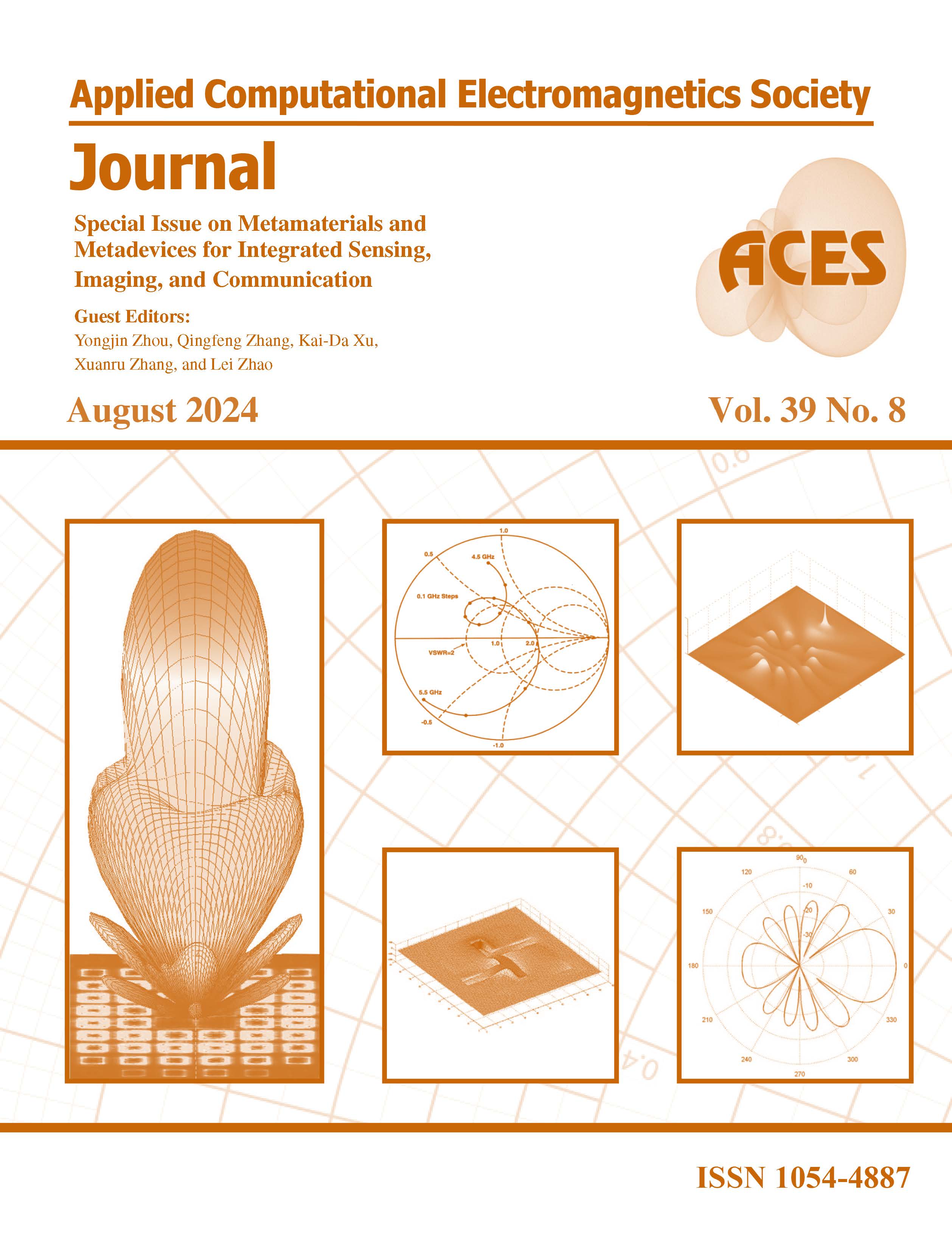Ultra-wideband Planar Magic-T using Interlayer Coupling 3 dB Directional Coupler and Branch-loaded Phase Shifter
DOI:
https://doi.org/10.13052/2024.ACES.J.390803Keywords:
Coupler, magic-T, phase shifter, ultra-widebandAbstract
In this paper, we propose an ultra-wideband magic-T operating in the frequency band from 1.2 to 4 GHz with a relative bandwidth of 108%, which is based on an interlayer coupling 3 dB directional coupler and a branch-loaded 90∘ phase shifter. Compared to traditional magic-T structures, it can operate within an ultra-wideband range and has the advantages of a simple structure and easy processing. Simulation and experimental results demonstrate excellent amplitude and phase stability. When the input is at the sum port, the phase error at each output port is less than 2.8∘. For the difference port input, the phase error at each output port is less than 7.6∘. Furthermore, the overall amplitude imbalance is less than 2.1 dB, the transmission coefficient is below −7.4 dB, and the isolation is greater than 11 dB. It can be used in ultra-wideband phased array systems to generate sum-and-difference beams for direction finding.
Downloads
References
M. Mansouree and A. Yahaghi, “Planar magic-tee using substrate integrated waveguide based on mode-conversion technique,” IEEE Microw. Wireless Compon. Lett., vol. 26, pp. 307-309, 2016.
F. He, K. Wu, X. P. Chen, L. Han, and W. Hong, “A planar magic-T structure using substrate integrated circuits concept,” in 2010 IEEE MTT-S International Microwave Symposium, pp. 720-723, 2010.
A. Farahbakhsh, “Ka-band coplanar magic-T based on gap waveguide technology,” IEEE Microw. Wirel. Compon. Lett., vol. 30, pp. 853-856, 2020.
J. Wang and T. Ling, “A novel ultra-wideband design of ridged SIW magic-T,” Prog. Electromagn. Res. Lett., vol. 82, pp. 113-120, 2019.
D. Kong, T. Zheng, and F. Hou, “A novel broadband magic-T based on slotline T-junction and microstrip-slotline transition,” in IET International Radar Conference 2013, pp. 0481-0481, 2013.
K. U-yen, E. J. Wollack, J. Papapolymerou, and J. Laskar, “A broadband planar magic-T using microstrip-slotline transitions,” IEEE Trans. Microw. Theory Tech., vol. 56, pp. 172-177, 2008.
Y. Wang, G. Hua, and J. Du, “Design of ultra-wideband magic-T using microstrip/slot coupler and phase shifter,” in 2015 Asia-Pacific Microwave Conference (APMC), pp. 1-3, 2015.
Y. Wu, F. Hou, and D. Kong, “Design of broadband planar magic-T using 3-dB branch-line coupler and phase shifter,” in Proceedings of 2014 3rd Asia-Pacific Conference on Antennas and Propagation, pp. 81-83, 2014.
Y. Chang, M. Yang, J. Fang, Z. Zhao, H. Yan, and Y. Dai, “Design of a novel ultra-wideband planar magic-T,” in 2018 International Conference on Microwave and Millimeter Wave Technology (ICMMT), pp. 1-4, 2018.
Y. Tai, Y. Ren, K. Jiang, and J. M. Zhou, “A novel electrically controlled sum and difference network based on reflective phase shifter,” in 2019 IEEE 3rd Information Technology, Networking, Electronic and Automation Control Conference (ITNEC), pp. 2411-2415, 2019.
A. M. Abbosh and M. E. Bialkowski, “Design of compact directional couplers for UWB applications,” IEEE Trans. Microw. Theory Techn., vol. 55, pp. 189-194, 2007.
D. M. Pozar, Microwave Engineering, 3rd ed. New York: John Wiley & Sons, 2005.
R. K. Mongia, RF and Microwave Coupled-Line Circuits, 2nd ed. London: Artech House, 2006.
M. F. Wong, V. F. Hanna, O. Picon, and H. Baudrand, “Analysis and design of slot-coupled directional couplers between double-sided substrate microstrip lines,” IEEE Trans. Microw. Theory Techn., vol. 39, pp. 2123-2129, 1991.
Y. P. Lyu, “Wideband phase shifters on multimode resonator with improved functionalities” [in Chinese], Ph.D. thesis, Nanjing University of Posts and Telecommunications, 2020.
Y. P. Lyu, L. Zhu, and C. H. Cheng, “Single-layer broadband phase shifter using multimode resonator and shunt λ
/4 stubs,” IEEE Trans. Compon. Packag. Manuf. Technol., vol. 7, pp. 1119-1125, 2017.




